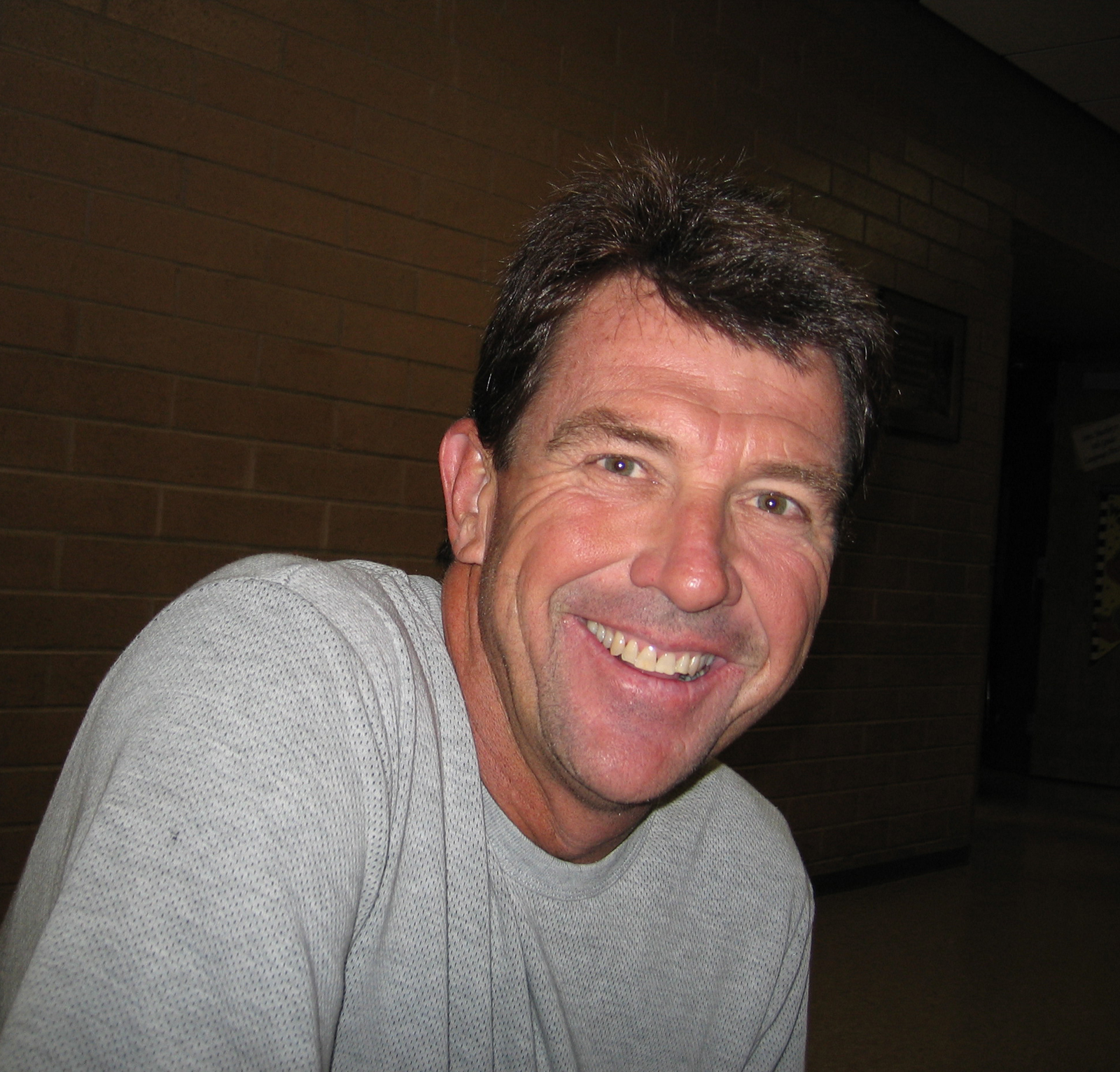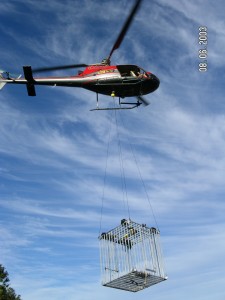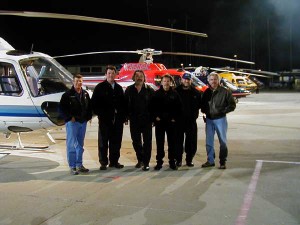By S. Clayton Moore
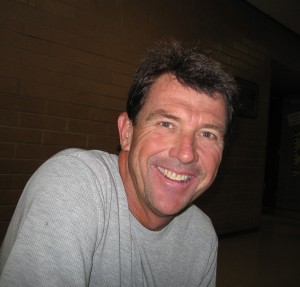
Craig Hosking started his aviation life as one of the most daring aerobatic pilots in the air show business. He’s since moved on to making movies.
When visionary Hollywood directors like Martin Scorsese, Michael Mann or John Woo need to bring complicated, thrilling aerial stunts to the big screen, they turn to the professional: Craig Hosking.
For the past 20 years, Hosking has been one of the most hard-working and sought-after pilots in the film business, racking up a resume that most traditional actors envy. With on-screen, blink-and-you’ll-miss-him roles in films from “The Rocketeer” to “Space Cowboys,” he’s still had a lot more big-budget screen time than your typical thespian.
Despite a predilection for acting—he’s in the Screen Actors Guild—where Hosking shines is in designing and shooting complex aerial sequences that involve dozens of aircraft at a time. He’s been the second unit director on several aviation-heavy films including “Executive Decision,” “Clear and Present Danger” and “Space Cowboys,” and more recently designed the aerial stunts in “The Hulk” and filmed aerial sequences for “The Aviator” and “Miami Vice.”
Hosking slowed down long enough to talk about his enormously diverse flying career, what it’s like to fly with movie stars and even what happens when you crash into a live volcano.
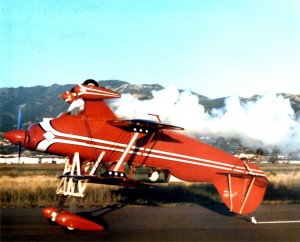
In his Pitts S-2, Double Take, Craig Hosking learned to take off, perform a full aerobatic routine, and then land, all while inverted.
Flying in his father’s footsteps
Hosking was born on March 15, 1958, the son of a successful helicopter pilot, Robert “Bob” Hosking, and his wife Annette.
Hosking’s father began his long career in helicopters in 1956, as a photographer in the U.S. Army, shooting film from the air. He then went to flight school, graduating with honors, and flew the H-21 in Korea and the H-34 in Vietnam. Returning home to Bountiful, Utah, he formed Hosking Helicopters, a busy and successful flight operation that provided aircraft for oil and mineral exploration, seismic research, forestry operations and construction.
By the time Hosking had reached an age where he could reach the pedals, his father was already teaching him how to fly.
“I learned to fly from my father when I was really just a kid,” Hosking recalls. “At age 12, I could have literally soloed in a helicopter.”
He didn’t wait long. At age 16, Hosking became the youngest ever legally licensed helicopter pilot.
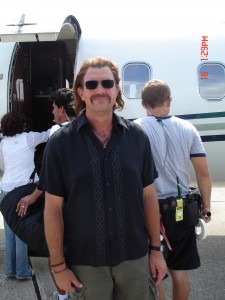
Acting is all in a day’s work for movie pilot Craig Hosking, who’s made-up to double as Colin Farrell’s character, Sonny Crockett, in Michael Mann’s “Miami Vice.”
“I had every kid’s dream: a helicopter in the backyard,” Hosking laughed. “By the time we got to my 16th birthday, I soloed in a Bell 407, a JetRanger, a Cherokee 140 and a Comanche 400. I was one of those kids who really did everything on his birthday.”
Despite his early introduction to helicopters, Hosking hasn’t played favorites when it comes to aircraft. Almost 16,000 hours of flight time later, his time is divided equally between helicopters and airplanes. Along the way, he’s acquired nearly every rating available, including single-engine, multi-engine, helicopter, seaplanes and even gliders.
“I’ve just loved everything about flying,” Hosking said. “My whole career, I’ve been diverse in the types of aircraft I’ve flown. That’s not very common. A lot of guys think it’s better to stay exclusively with one aircraft or another.”
Double Take
By the time he was in his early 20s, Hosking was a successful partner in his father’s helicopter business, but he was also looking to make his own way in life.
“I was at this stage in my career where I had found quite a bit of success in my father’s helicopter company,” Hosking recalled. “It looked to me like I was going to end up running the business in my later years. I had always gotten along very well with my father, but I felt the need to go do my own thing for a couple of years.”
His wanderlust took him to air shows, where he began exploring the daring world of aerobatics.
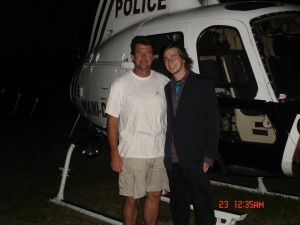
Craig Hosking poses with his son Ryan on the set of “Miami Vice.” Ryan doubled one of the characters and served as his father’s ground coordinator.
Hosking trained in advanced aerobatics with Clint McHenry, a three-time U.S. national aerobatic champion.
After a few years of watching pilots fly inverted passes through crowded airfields, he got a brainstorm for a stunt plane that could take off, land and fly completely inverted.
“It’s a heck of a trick,” Hosking said. “We were able to accomplish something that I don’t think anyone else has ever done in aviation, which is to take off and land upside down.”
In 1984, with some financial support from his father, he set about building an aircraft that stands out in his mind. He named the fully-converted Pitts S-2 Double Take.
“I put the plane in the shop, and with some friends, we were able to build upside-down landing gear on it,” Hosking remembered. “It had completely inverted systems: fuel, battery, brakes, everything that needed to be modified. It had a completely dry-scavenged oil system, so the engine had no oil to foul the cylinders when the plane was inverted.”
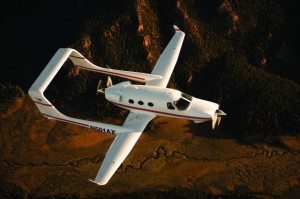
For “Miami Vice,” Craig Hosking flew stars Jamie Foxx and Colin Farrell in the innovative Adam A500 that was featured in the movie’s smuggling sequences.
Hosking even devised an innovative seatbelt system to haul himself into the plane. During a show, he would land the plane inverted, taxi up to an air show’s center stage and get out. Later in the show, he’d get back in the plane—upside down—and a winch would lift him up into the aircraft, which he would then launch in its inverted position.
Hosking even roped his father into the air show circuit. In the late 1980s, Hosking Helicopters was suffering financially, and the business had to be liquidated. Robert and Annette Hosking were able to ease the burden with “Otto, the Clown Helicopter,” a novel act using a Schweizer 300C helicopter painted like a clown, but with nimble aerobatic abilities performed at nearly 100 mph. For their efforts, the Hoskings were the 1994 recipients of the prestigious Bill Barber Award for Showmanship, an award that has also been given to pilots like aerobatic champion Patty Wagstaff and aviation legend Bob Hoover.
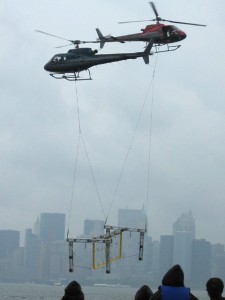
Partnering two helicopters on a single sling load is no small feat. Craig Hosking and his father, Bob Hosking, coordinate the stunt in the black helicopter, while Hosking’s partner, Cliff Fleming, handles the red one.
“He and my mom spent ten years in the air show business,” Hosking said. “The timing was OK for the loss of my father’s business. We found great success in the air show circuit.”
After a couple of years flying Double Take, Hosking earned the Art Scholl Award for Showmanship, given by the International Council of Air Shows in 1988.
“After a lot of work, effort, test training and money, I found myself at the top of the air show world, in a relatively short amount of time,” Hosking said.
Today, Double Take lives on as a permanent exhibit at the Air Museum Planes of Fame in Valle, Ariz., but Hosking is still flying like crazy—in the movies.
Breaking into Hollywood
In 1987, Hosking had a plan. He would slip out to Los Angeles for two weeks every six months and try to drum up some business, shooting aerial photography. But his quest didn’t work out quite the way he intended.
“That was the big idea,” Hosking laughed. “I figured that in five years, I could transition out of air shows and into the movies.”
On his first trip to Hollywood, he met Jim Gavin, a successful Hollywood movie pilot whose credits include “Assassins” and “The X-Files: Fight the Future.” Gavin, impressed with Hosking’s ability and backbone, set up an introduction with Tom Friedkin.
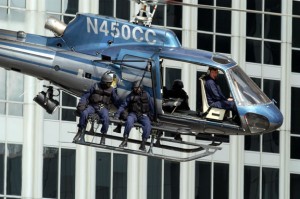
Craig Hosking flies a team of stuntmen during an aerial sequence in the 2003 action movie, “S.W.A.T.,” starring Colin Farrell and Samuel L. Jackson.
As a Hollywood stunt pilot, Friedkin crashed aircraft in more than a dozen films and even earned a role as Miner Tom in “Pale Rider,” Clint Eastwood’s western. He owned Cinema Air, one of the most successful flight operations in the business. Friedkin has since moved on to rank in the Forbes 400, as a Toyota dealer in Texas. But in 1987, he had just finished filming “Blue Thunder,” a challenging helicopter thriller, and was ready to give Hosking a tryout.
“Tom is super successful, owns about 20 warbirds, and is an absolute aviation enthusiast, just like the rest of us,” Hosking said. “I had been down to San Diego at an air show and stopped at the Carlsbad Palomar Airport to see Tom.”
Friedkin grilled Hosking about the types of aircraft he’d flown and the extent of his helicopter flying. As they were walking through the hangar, the entrepreneur invited the young pilot to fly a series of aircraft, including a Bell 47, a Jet Ranger and a CAP-10 aerobatic plane.
“It was quite a check ride,” Hosking said. “He wanted to find out if I was snowing him on my flying, and he found out pretty quickly that I knew my stuff. We went back in the office, and he offered me a job then and there.”
Hosking went home, packed his gear and headed back to California to start flying in movies. That first year, he burned the candle at both ends, aggressively pursuing aerial photography work with the studios and keeping up with his air shows. But by EAA AirVenture Oshkosh 1993, Hosking was ready to focus fulltime on his career.
Reach for the sky
You’d be surprised how often you’ve actually seen Hosking in the movies he films. In “Speed 2,” Hosking tries to push Sandra Bullock out of a float plane. He also flew a lively sequence starring an old Stearman and Tommy Lee Jones in “Space Cowboys.”
Although he flew for Cinema Air for many years, the demand for Hosking’s talents finally outstripped his ability to stay physically near enough to Cinema Air’s aircraft to properly manage them. Friedkin sold Hosking a JetRanger at under-market value, and he subsequently struck out on his own as an independent operator.
Since then, Hosking has flown, filmed or coordinated stunts in half a dozen Clint Eastwood movies, three Tom Clancy thrillers, two films in the “Mission Impossible” series and two “Jurassic Park” films. Among the directors who count on Hosking to realize their visionary aerial sequences are Martin Scorsese, John Woo, Clint Eastwood, Michael Mann and Andy and Larry Wachowski.
“Every job is different,” Hosking observed. “I’m lucky that I work a lot. If I wanted to, I could work 24/7. We try to bring a very creative, exciting flair to the work, which may contribute to more on-screen time.”
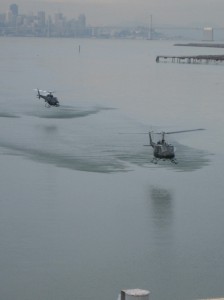
During a sequence in NBC’s “Fear Factor,” Craig Hosking races across San Francisco Bay in the lead Huey, as a camera crew chases him.
While Hosking’s skill on the stick is exemplary, his true value these days lies in the art of aerial coordination, or figuring out just how to get a dozen aircraft on-screen, flying true to the director’s vision and filming each sequence in an exhilarating style.
“I tell directors right off the bat at the very first meeting, ‘You have the right to ask for anything. It’s my right to figure out how to accomplish it safely,'” Hosking explained. “If they want an airplane to fly upside-down under a ten-foot bridge, they can ask for it. It’s my job to figure out how we can accomplish that shot, whether it’s through real-life, live-action flying or by special effects, graphic images or mock-ups. These days, I know enough about filmmaking to bring every tool to the table.”
That means coming up with stylistic flourishes like those in Ang Lee’s film “The Hulk,” where Hosking flew a Eurocopter that was marked with reference points. Special effects artists later used that footage to computer-generate an armed Comanche. Hosking credits the visual effects team for making the Comanche so realistic that many people thought Hosking flew the real thing.
“These ideas come from a super-inquisitive mind,” Hosking said. “I’ve seen some really pathetic visual effects portraying aircraft. The hardest problem for visual effects artists is creating a proper bank on an aircraft that will match the speed and rate of turn. If a plane is going 300 miles per hour in a computer-generated image, but they put only a ten-degree bank on the plane, none of it looks right. It looks like a car going around the corner, rather than an attack aircraft turning into a 90-degree bank and pulling around the corner.”
Hosking often serves as a second unit director, a position that requires him to direct certain segments of the movie.
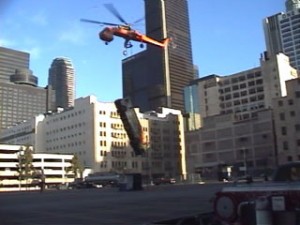
Craig Hosking flies this Sikorsky S-64 Skycrane in “Swordfish,” lifting villain John Travolta’s getaway bus over the streets of Los Angeles.
“When you’re directing second unit, you’ll meet with the director, plan the shots, read through the scripts and plan just how a sequence needs to go,” he explained. “With the help of the producer, you hire your own crew, go out and shoot sequences and send in footage. Then it’s just a matter of checking with the director every few days to see if your images match what he wants.”
Hosking served as second unit director on several big budget films, including “Con Air,” “The Sum of All Fears” and “Executive Decision,” in which he filmed F-14 Tomcats intercepting a 747 over Key West. He helped spark Harrison Ford’s interest in aviation in “Clear and Present Danger.”
“Harrison already had a Gulfstream for personal use but he wasn’t licensed yet,” Hosking recalled. “We were working in Xalapa, Mexico, on these horrible roads. I was spending my days in this beautiful twin-engine Bell 412 helicopter, and he was spending his time bumping around on washed-out roads in the back of a truck. He quickly realized he ought to be flying with me, so we got him flying that helicopter with me, back and forth.”
Hosking credits actors like Ford with true bravado and skill.
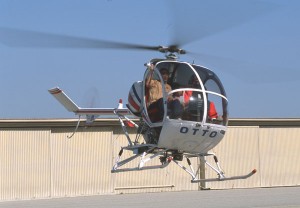
Bob Hosking has had his own remarkable career, flying “Otto the Clown Helicopter” in air shows and working with his son on films like “Windtalkers.”
“These accomplished, sharp-thinking guys take to flying really well,” Hosking said. “In one scene, Harrison jumps up on the skid of the helicopter as I fly away. He actually did that stunt himself. I think we gave Harrison a little interest in flying, and he’s really taken off since then.”
He’s pleased with his recent film, “Miami Vice,” which contains several stunning flying sequences starring the distinctive Adam A500 very light jet, which made its debut film appearance smuggling cocaine to Miami.
“I’m really proud of the aerials in that movie,” Hosking said. “We were really happy with the smuggling sequences.”
During the film, Hosking spent some time with stars Jamie Foxx and Colin Farrell, teaching them to act like pilots.
“Colin loved it and took to it well,” Hosking remembered. “In fact, he flew an approach with me sitting beside him. He flew that aircraft down to about three feet, with only a little bit of help from me. It was his first time flying an aircraft, and it speaks well of the Adam A500, but it also speaks well of Colin Farrell.”
Hosking also provided the aerial coordination for Martin Scorsese’s “The Aviator,” planning a scene in which Leonardo DiCaprio, as the legendary Howard Hughes, films a colorful dogfight between seven Fokker D.VIIs and seven English S.E.5.
Hosking has a dedicated team of professional pilots, mechanics and ground crew, which he taps regularly for movie shoots. In fact, he says, they’ve been together so long they’ve developed their own language for certain sequences.
“We have a type of shorthand where a film is concerned,” Hosking admitted. “I can say, ‘Let’s do shot 3B from “Clear and Present Danger,”‘ and everybody remembers it. It’s as if a thousand words have been spoken. Then we’re off to the races.”
Sometimes, a scene comes up that you just have to fly yourself. One of the early sequences in “Space Cowboys” has Tommy Lee Jones’ rambunctious pilot taking a young man on the barnstorming ride of his life, in a spiraling Stearman. The sequence was nominated for a World Stunt Award in 2001. The pilot is Hosking, and the “kid” in the backseat is Jones.
“Yep, that’s me, and that’s really Tommy Lee with me during the whole deal,” Hosking laughed. “Clint Eastwood is a good friend. I taught him to fly helicopters many years ago, so I’ve done many of his projects. ‘Space Cowboys’ was right up our alley.”
In the end, when trying to do a shot right, the biggest obstacle Hosking faces is the bottom line.
“It’s challenging to accomplish what’s written in a script while being respectful of the budget,” Hosking said. “We have so much cost just getting all the aircraft and support gear on a set. The cost may hit seven figures before a single frame of film has been shot.”
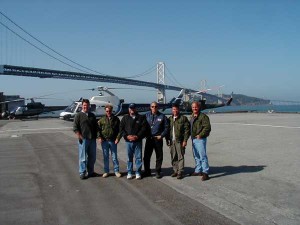
The flight crew from Ang Lee’s “The Hulk” includes L to R: Craig Hosking, Bruce Benson, Jack Scanlon, Rick Shuster and Dan Rudert.
But when it works, it works. In a recently filmed sequence for an upcoming Pierce Brosnan thriller, “Seraphim Falls,” he took a stuntman on a sling line from a helicopter, over a waterfall.
“It was the most exciting stunt I’ve pulled in a long time,” he said.
Facing the core
But when it goes badly, a film shoot can potentially be fatal. “Crash in a Volcano,” an episode from the new Discovery Channel series, “I Shouldn’t Be Alive,” portrays one close call. Hosking stars in his own real-life action story.
In 1991, Hosking was filming live volcano exteriors in Hawaii for a big-budget movie. Cinematographer Christopher Duddy and photographer Michael Benson were with him when disaster struck.
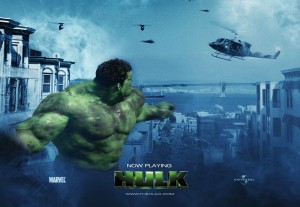
In “The Hulk,” Craig Hosking flew a Eurocopter AS 350-B2 that was marked with reference points. Special effects artists later used that footage to computer-generate an armed Comanche.
“As I was flying that fateful pass, just about two seconds before arriving over the center of the crater, we experienced a governor linkage failure,” Hosking recalled. “During the autorotation, I could’ve gone over to the outside of the crater, but it was so steep that it would’ve been a fatal rollover.”
The crash happened so fast that Hosking barely had time to think.
“You don’t have time for emotion,” he said. “You have ten seconds. Here’s how it goes: ‘Okay, we have a problem. I have to get the RPMs up. Now we’re descending. We can’t land outside. We have to land inside. That’s not a good place to go, but it’s our only choice. I see a flat spot, but I have get by those rocks, and I have to get away from the hot lava. RPMS are good. Speed is good. Here comes the ground.’ And you’re down.”
The three filmmakers spent hours choking on poisonous gas from the volcano before trying to climb out by themselves, after it became apparent that rescue wasn’t imminent. After Duddy and Benson became trapped on a high ridge, Hosking managed to radio for help by jury-rigging the radio to a spare battery. A local pilot made a heroic flight into the core and rescued Hosking, but it took nearly two days and an improvised rescue effort organized by the film company to retrieve Duddy and Benson from their plight.
“For a long time, the volcano was on my mind a lot,” Hosking told The Discovery Channel. “I guess I got to see the core of myself a little bit, too.”
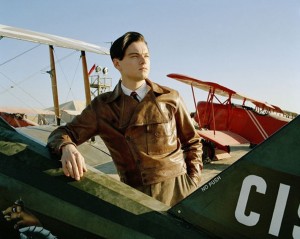
For “The Aviator,” which starred Leonardo DiCaprio as Howard Hughes, Craig Hosking had to create a plausible 1920s movie set, complete with a vintage biplane collection.
These days the pilot simply feels blessed for the good fortune he’s enjoyed over his years in Hollywood.
“I absolutely believe, without comparison to anyone else in the world, that I have the coolest job you could ever have,” Hosking said. “I’ve been to 45 countries. I get to fly every kind of cool helicopter, jet and airplane that’s ever been built. I work in a creative field where I get to express my creative interests and use my abilities. I control my own schedule. I can live anywhere in the world I want. None of this is said in bragging. It’s said in absolute gratitude.”
Returning to his roots, Hosking now lives back in Utah, commuting in an Aerostar to his gigs in Hollywood. You’ll often find his father flying copilot, and working alongside his son on films like “Windtalkers.” Hosking reflects on what his father has meant to his extraordinary life.
“I was at LAX, waiting to go work on some big movie somewhere, and I had this quiet moment of profound appreciation to my father for teaching me how to work hard and develop great flying skills,” he remembered. “You can’t imagine how lucky I am.”











